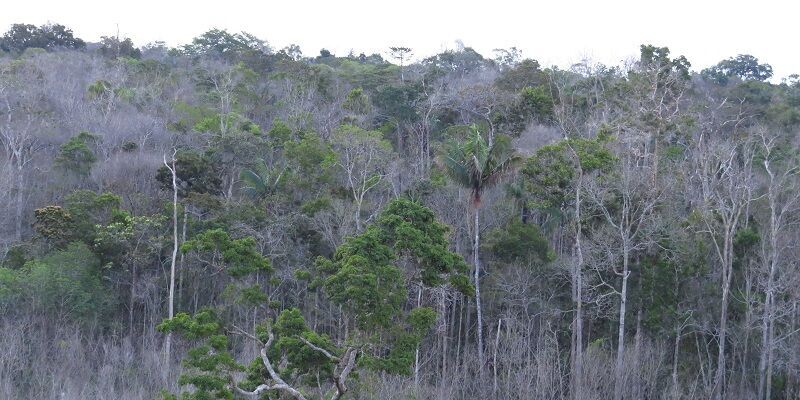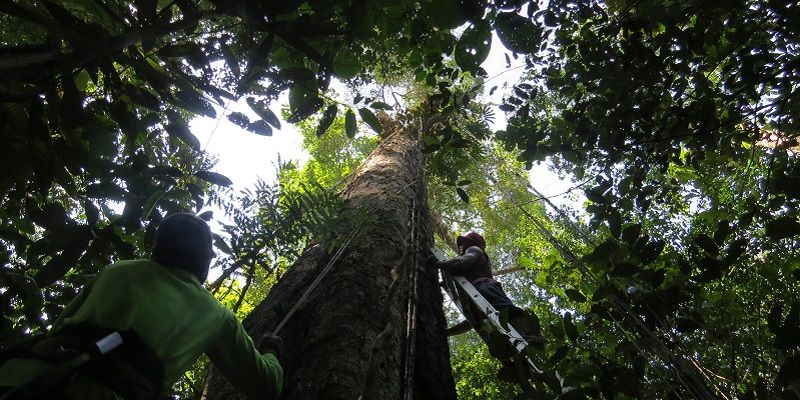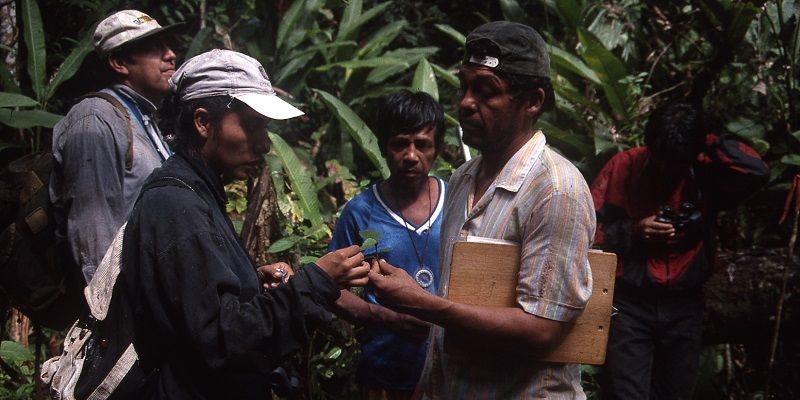
A team of more than 100 scientists has assessed global warming's impact on thousands of tree species across the Amazon rainforest, assessing the winners and losers from 30 years of climate change.
Their analysis found that the effects of climate change are altering the rainforest’s composition of tree species, but not quickly enough to keep up with the changing environment.
The team, led by University of Leeds in collaboration with more than 30 institutions around the world, used long-term records from more than a hundred plots as part of the Amazon Forest Inventory Network (RAINFOR) to track the lives of individual trees across the Amazon region.
Analysing 30 years of tree growth and death
Their results found that since the 1980s, the effects of global environmental change – stronger droughts, increased temperatures and higher levels of carbon dioxide in the atmosphere – has slowly affected specific tree species’ growth and mortality.
In particular, the study found that the most moisture-loving tree species are dying more frequently than other species and those suited to drier climates are unable to replace them.
Lead author Dr Adriane Esquivel Muelbert, from the School of Geography at Leeds, said: "The ecosystem’s response is lagging behind the rate of climate change.
"The data showed us that the droughts that hit the Amazon basin in the last decades had serious consequences for the make-up of the forest, with higher mortality in tree species most vulnerable to droughts and not enough compensatory growth in species better equipped to survive drier conditions."

Measuring big trees in Central Amazon, Brazil, 2016. Credit: Adriane Esquivel Muelbert, University of Leeds
Climate change 'winners'
The team also found that bigger trees – predominantly canopy species in the upper levels of the forests – are outcompeting smaller plants. The team’s observations confirms the belief that canopy species would be climate change "winners" as they benefit from increased carbon dioxide, which can allow them to grow more quickly.
This further suggests that higher carbon dioxide concentrations also have a direct impact on rainforest composition and forest dynamics – the way forests grow, die and change.
In addition, the study shows that pioneer trees – trees that quickly spring up and grow in gaps left behind when trees die – are benefiting from the acceleration of forest dynamics.
Study co-author Oliver Phillips, Professor of Tropical Ecology at Leeds and founder of the RAINFOR network said: "The increase in some pioneer trees, such as the extremely fast growing Cecropia, is consistent with the observed changes in forest dynamics, which may also ultimately be driven by increased carbon dioxide levels.”

Identifying seedlings, Madre de Dios River, Peru 1998. Credit: Oliver Phillips, University of Leeds
Co-author Dr Kyle Dexter, from the University of Edinburgh, said: "The impact of climate change on forest communities has important consequences for rain forest biodiversity.
"The species most vulnerable to droughts are doubly at risk, as they are typically the ones restricted to fewer locations in the heart of the Amazon, which make them more likely to be extinct if this process continues.
"Our findings highlight the need for strict measures to protect existing intact rainforests. Deforestation for agriculture and livestock is known to intensify the droughts in this region, which is exacerbating the effects already being caused by global climate change."
Further information
The paper "Compositional response of Amazon forests to climate change" is published in Global Change Biology on 8 November 2018
For more information or to arrange interviews, contact press officer Anna Harrison at the University of Leeds a.harrison@leeds.ac.uk or +44(0)113 343 4031.